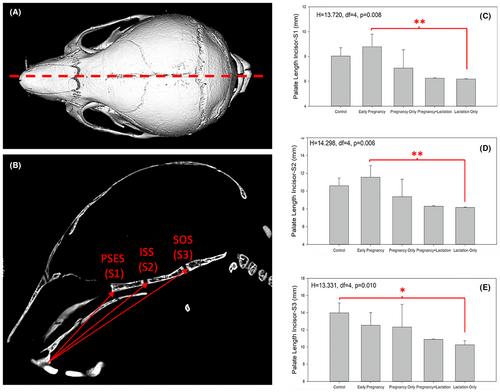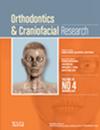Despite data linking smoking to increased risk of fetal morbidity and mortality, 11% of pregnant women continue to smoke or use alternative nicotine products. Studies confirm that nicotine exposure during pregnancy increases the incidence of birth defects; however, little research has focused on specific anatomic areas based on timing of exposure. We aim to determine critical in utero and postnatal periods of nicotine exposure that affect craniofacial development, specifically palate growth. Malformation of the palatal structures can result in numerous complications including facial growth disturbance, or impeding airway function. We hypothesized that both in utero and postnatal nicotine exposure will alter palate development.
We administered pregnant C57BL6 mice water supplemented with 100 μg/mL nicotine during early pregnancy, throughout pregnancy, during pregnancy and lactation, or lactation only. Postnatal day 15 pups underwent micro-computed tomography (μCT) analyses specific to the palate.
Resultant pups revealed significant differences in body weight from lactation-only nicotine exposure, and μCT investigation revealed several dimensions affected by lactation-only nicotine exposure, including palate width, palate and cranial base lengths, and mid-palatal suture width.
These results demonstrate the direct effects of nicotine on the developing palate beyond simple tobacco use. Nicotine exposure through tobacco alternatives, cessation methods, and electronic nicotine delivery systems (ENDS) may disrupt normal growth and development of the palate during development and the postnatal periods of breastfeeding. Due to the recent dramatic increase in the use of ENDS, future research will focus specifically on this nicotine delivery method.



